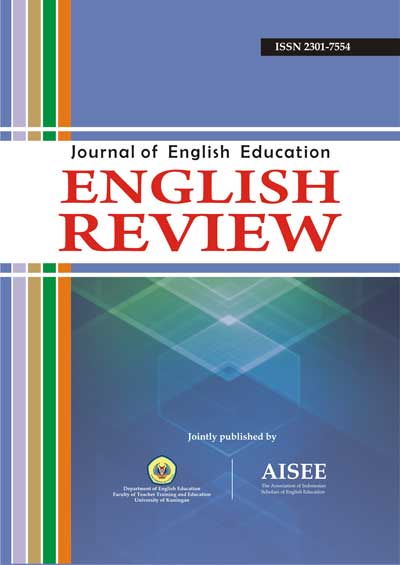TEACHING GENDER AWARENESS THROUGH FAIRY TALES IN THE EFL CLASSROOM
Abstract
Abstract: The purpose of this study is to explore how gender has been portrayed historically and in current times in fairy tales and then to introduce the effectiveness of using fairy tales in language instruction. While some instructors may still believe that teaching EFL encompasses focusing on linguistic elements only, recent trend in EFL teaching indicates the necessity of integrating literature in the curricula because of its rich potential to provide an authentic model of language use as well as its universal themes within human history. Traditional fairy tales and modern ones can allow students to think critically about how men and women are portrayed and to compare these portrayals with their own communities. It is hoped that discussion of the topic of gender issues can help students foster critical thinking and literacy and empower them with a further understanding of gender notions in their lives.
Keywords: intercultural communication, English as a second language, EFL classroom
References
Archer, M. (2008). Gender stereotypes. Retrieved from http://ezinearticles.com/?expert= Maureen_Archer
Baker-Sperry, L. and Grauerholz, E. (2003). The pervasiveness and persistence of the feminine beauty ideal in children’s fairy tales. Gender and society, 17.5. 711-26.
Cook, H. M. (?) Cinderellas from around the world: Are their tales created with gender bias? Retrieved from http://www.easternct.edu./smithlibrary/ depts/curriculum/
cinderella2.htm.
Inge, M. T. (2004). Art, adaptation, and ideology: Walt Disney’s Snow White and the Seven Dwarfs. Journal of Popular Film and Television 32. 3. 132-42.
Kuo, J. (2005). Teaching ESL/EFL student to recognize gender bias in children’s literature. The Internet TESL Journal. Retrieved from http://iteslj.org/Articles/Kou-GenderBias.html.
Lazar, G. (1993). Literature and language teaching: A guide for teachers and trainers. Cambridge: Cambridge University Press.
Lieberman, M. R. (1972). Some day my prince will come: Female acculturation through the fairy tale. College English 34. 3. 383-95.
Orenstein, P. (2006). What’s wrong with Cinderella? Retrieved from http://www.nytimes.com/2006/12/24/magazine/24princess.t.html.
Pandolfo, E. (2007). Feminist critique of Walt Disney’s Cinderella. Retrieved from http://voices.yahoo.com/feminist-critique-walt-disney-cinderella-259970.html?cat=9.
Synnott, A. (1990). Truth and goodness, mirrors and masks part: A sociology of beauty and the face. The British journal of sociology 41. 1. 55-76.
The Dualistic nature of women: Witches and women in fairy tales. Retrieved from http://voadn.wordpress.com/2001/08/07/the-dualistic-nature-of-women-witches-and-women-in-fairy-tales.
Wakakuwa, M. (2003). Ohimesama to jenda. Tokyo: Chikuma Shobo.
All articles published in English Review: Journal of English Education (ERJEE) are licensed under the Creative Commons Attribution 4.0 International License (CC BY 4.0).
Copyright Ownership
Authors retain the copyright of their articles and grant ERJEE the right of first publication. The journal is granted a non-exclusive license to publish, reproduce, and distribute the article in any format, medium, or platform, provided that proper credit is given to the original authors.
License Terms – CC BY 4.0
Under the Creative Commons Attribution 4.0 International License, others are free to:
- Share — copy and redistribute the material in any medium or format
- Adapt — remix, transform, and build upon the material for any purpose, even commercially
As long as they:
- Provide appropriate credit to the original author(s) and source
- Provide a link to the license (https://creativecommons.org/licenses/by/4.0/)
- Indicate if any changes were made
There are no restrictions on the reuse, reproduction, or adaptation of published articles as long as attribution is properly given.
Author Warranties
By submitting a manuscript to ERJEE, authors confirm that:
- The work is original and does not infringe any existing copyright.
- The manuscript has not been previously published and is not under consideration elsewhere.
- All sources and references are appropriately acknowledged.
- Necessary permissions have been obtained for any copyrighted materials used.










